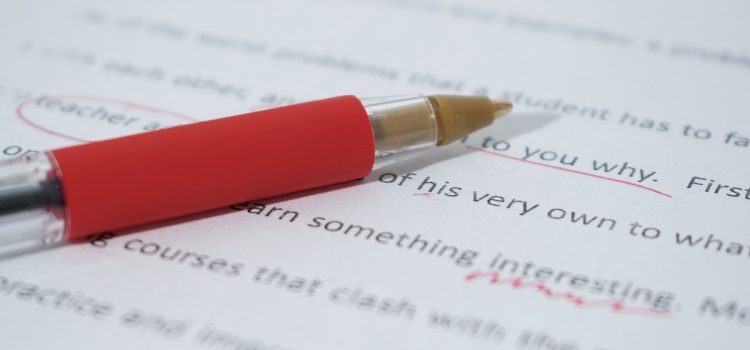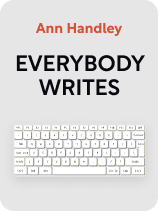

This article is an excerpt from the Shortform book guide to "Everybody Writes" by Ann Handley. Shortform has the world's best summaries and analyses of books you should be reading.
Like this article? Sign up for a free trial here.
What are the final stages of the writing process? How do you know when your piece is ready for publication?
In Everybody Writes, Ann Handley offers a comprehensive guide to writing everything you need to write in today’s business world. The book’s main focus is on writing for marketing purposes, but many of the principles can be applied to other types of writing as well.
Keep reading for Handley’s advice on your third and fourth drafts and your final edits as you prepare for publication.
Draft 3
Once you’ve done your large-scale and detailed editing for Draft 2, you can move on to Draft 3. Draft 3 is when you’ll focus on your connection to the audience. Handley recommends imagining one specific individual as your reader and switching perspectives with them. Read through your piece as this reader, identify what misunderstandings or questions they have, and make sure they can see themselves in what you’ve written.
(Shortform note: In addition to identifying questions and confusions, switching places with your reader will help you orient your writing toward them and away from yourself. Whatever you’re writing, you’re writing it to serve the reader. It can be tempting to craft writing that satisfies you—florid, convoluted writing using your favorite words, for instance—and putting yourself in your reader’s shoes can help you avoid that temptation.)
Draft 4
When you’re preparing for publication, you’ll want to add style and voice to your piece. This includes things like humor and figurative language. For Draft 4, Handley emphasizes that you should write in second person and make sure your sentences and paragraphs read quickly and clearly. Cut any sentences or words that slow the pace of the piece. She also suggests using things like bullet points, visuals, and blank space to make the piece more visually appealing.
(Shortform note: While Handley says to cut items that slow your writing’s pace, slowing the pace might not always be the right move. You can alternatively strategically manipulate the pacing of your piece to maintain reader engagement. A reader might get bored with a piece that maintains the same speed throughout, but you can use heavier words or sentences to change up the pace, keep them interested, and draw their attention to important ideas.)
The Final Edit
Once your fourth draft is finished, it’s time to ask others to help with your editing. The author recommends first running the piece through an AI editor to catch mistakes you may have missed and resolving those before sending it to your human editor.
A human editor should be someone you work with long-term who understands not only the basic rules of writing but also your unique style and voice. Ideally, your editor will be able to identify errors, fact-check, and rephrase and rewrite while maintaining your voice.
(Shortform note: Depending on your situation, you may also have the opportunity—or obligation—to edit your work as a group. This can improve your piece since you’ll have more people looking at it, but you also run the risk of lots of disagreements or semantic arguments. To minimize these, make sure everyone in the group understands the purpose of the piece and your brand voice, and that they know their own roles in the process—who is the writer, who are the reviewers, and who has the final say on edits.)
Before publication, Handley also recommends that you read your final draft out loud to catch any errors or places where the phrasing could be tightened up. Then, review it visually to make sure it’s digestible for the reader in whatever format they’re taking it in. Huge blocks of text will be unappealing to someone reading your piece on their mobile device, and using white space and plenty of visuals makes it easier to read.
(Shortform note: Handley suggests reading your piece out loud to yourself, but there are also benefits to reading it out loud to another person: Having an audience as you read can help you be more aware of your audience’s perspective, and it makes you more likely to notice areas that sound clunky enough to be worth changing.)
Finally, once your work has been published, let your attachment to it go. After it’s published, your work doesn’t belong to you anymore: It belongs to the public. If you have regrets about the final product because it wasn’t quite what you wanted it to be, take it as a lesson for next time. And finally, congratulate yourself! You’ve just accomplished something great.
(Shortform note: Sometimes your biggest regret from a piece of writing is having to get rid of something you worked hard on or really liked from your earlier drafts—killing your darlings, as the saying goes. However, the reason you had to let those go was that they were your darlings, meaning they served you and not the reader. As Handley says, published writing is for the reader, so if you had to put your favorite parts on the chopping block, don’t feel bad. Remember that doing so was a gift to your audience, and keep those treasured pieces for yourself.)

———End of Preview———
Like what you just read? Read the rest of the world's best book summary and analysis of Ann Handley's "Everybody Writes" at Shortform.
Here's what you'll find in our full Everybody Writes summary:
- Why there is no such thing as a bad writer
- A guide to improving your writing and reaching your audience
- How to adapt your writing to different formats while maintaining your voice






